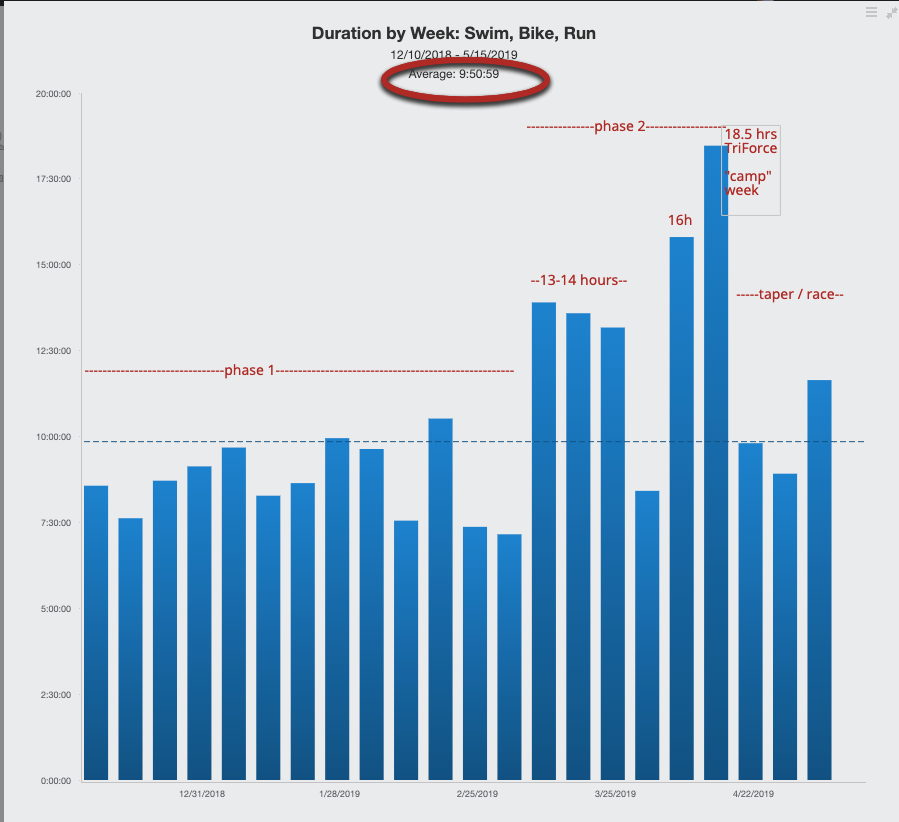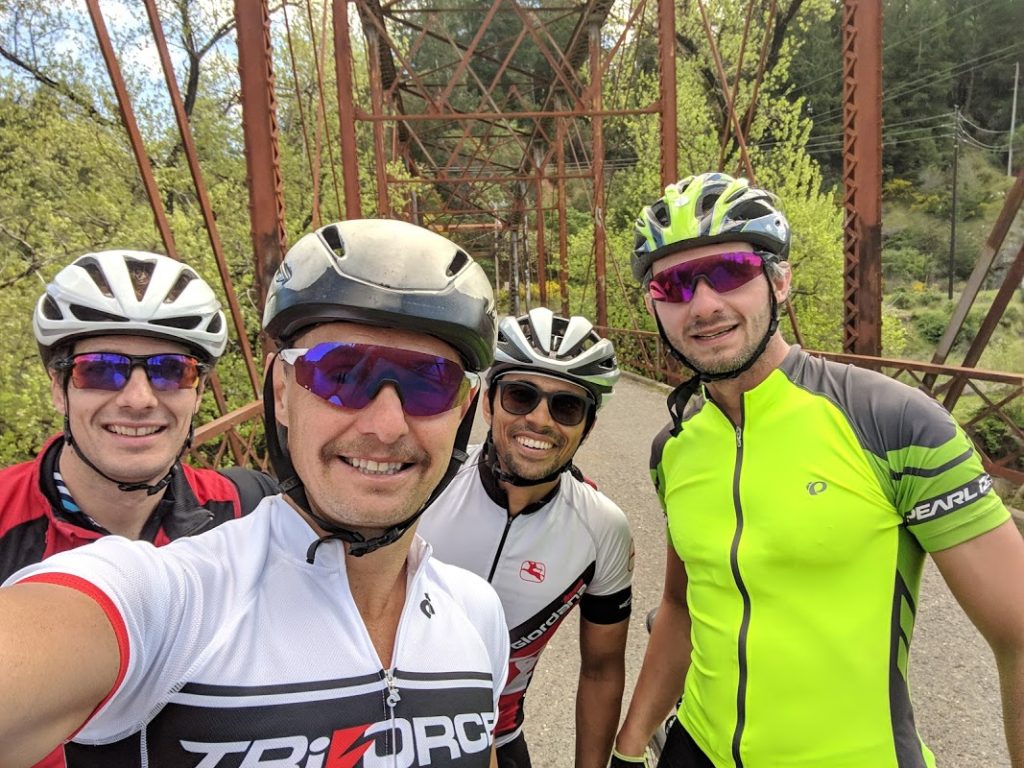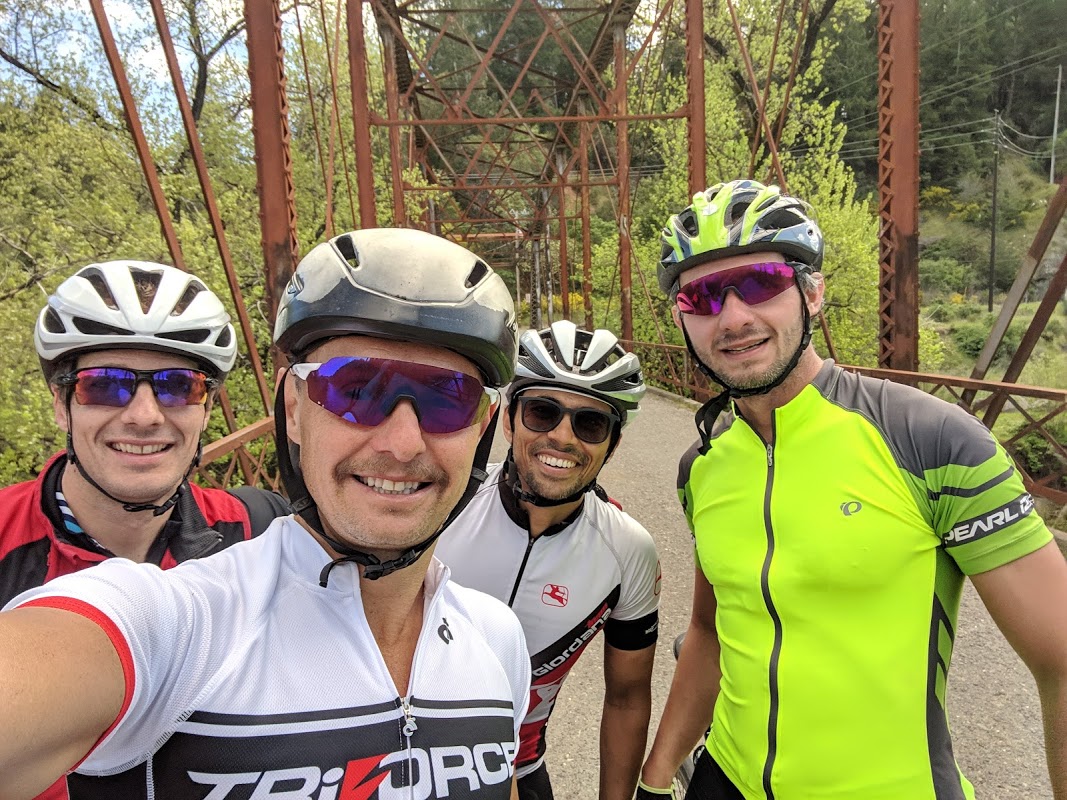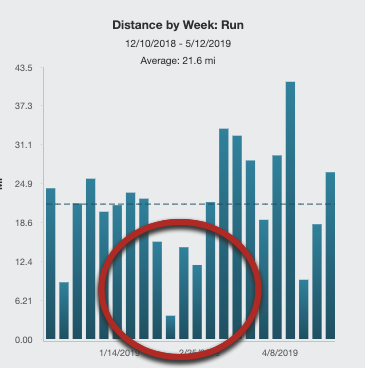This is the third post in my series on my experiment in trying to qualify for Kona on 10ish hours per week Ironman training plan. It’s an example of how a busy athlete might approach Ironman training on a time budget. I wanted to use this build as a learning experience to improve myself as a coach. Before reading this post check out the previous posts: (1) The 10 Hours per Week Plan and (2) the halfway update of my 10 hours per week training. This article picks up where they left off.
(UPDATE: Spoiler alert: IT WORKED!!!!! I won my age group with a time of 9:26 and qualified for Kona!)
Wrapping up Phase 1 on a Negative Note:
In my last post everything was going almost perfectly… a sure sign that some challenge was going to pop up! Well, my heel injury flared up and I ended up having 4 weeks of hampered / limited running. With the injury causing major issues all the way through to 10 weeks out from Ironman Santa Rosa, I was having doubts I could have the run fitness and health to race strong. As a result (and nonstop rainy weather didn’t help), motivation hit a low point.
However I turned a negative into a positive and took time to study my injury issues and I actually unlocked what I think is the root cause and how to fix it. The injury got under control and I decided to look at the lighter weeks of training as a breather before pushing into 10 hours per week phase 2– where we do 4-6 bigger weeks before tapering. A bit of a break before going into Phase 2 can be a benefit– you lose a little fitness but you hopefully recharge the mind and body for a strong final push.

The first half of my build was under 10 hours per week, followed by “phase 2” with some bigger weeks, followed by taper. It all averaged out to just under 10 hours per week.
10 Hours Per Week Plan Phase 2 – What Needs to be Done?
The studious reader will recall from the 10 hours per week plan article that phase 2 is where we do more than 10 hours per week in the final handful of weeks before the Ironman. Heading into phase 2 we ask the question– “what needs to be done to be ready to race Ironman?” For most people, the answer will be more volume and longer long bikes / runs to make sure they are ready to “go the distance.”
Here were my key focuses:
- I needed to rebuild my run fitness. After 4 weeks of barely running, I had lost a ton of run fitness and durability. And as I noted in my last post, while my speed was good, my durability wasn’t great even before the heel problems. On the plus side, having figured out my injury issues, I felt I could start wearing some more “normal” shoes vs. being stuck in barefoot shoes, which should provide and instant durability boost. (note that I was somewhat wrong– the switch back to maximal shoes or some workouts aggravated an old psoas injury). Solution: slower miles, more miles. If you are out of shape (and nursing an injury) you can’t push both speed and distance. So, I kept speed much slower and just focused on doing slower miles, trusting that the ability to run fast at IM effort will be maintained. In the final block I did 4 weeks of 30ish miles and 1 big week of 40+ miles (camp week). This was hardly “big” but it was the best I could do given the nagging injuries and the fact that I was “cramming” the run on a compromised base of training.
- I needed to extend my bike fitness to 5 hours. The bike was very strong coming out of the 10 hour program and I almost felt like I could have done a strong Ironman bike without a phase 2. I made the interval reps longer and added 1 hour relaxed before the 3 hour harder ride. I did a 4 hour ride most weeks in phase 3, but with 2 x rides of 5 hours or more. During camp week I did a double longer ride (4 hours hills + 112 miles on the course).
- Put together some good swim weeks. my swim training was “meh” heading into phase 3. I put in a couple respectable 10k + weeks before the taper (including 2 Ironman distance OW swims) which gave me a boost.
What happened in Phase 2:
By the end, the increased volume from phase 2 had me pretty fatigued and my speed / power was down a bit in all 3 sports for basically the entire block as a result, but that’s to be expected.
Hard 4 hour bikes: I did 3 harder 4 hour rides indoors during the taper. 1 hour relaxed followed by intervals at Ironman effort and low rpm “climbs” at 95% of threshold. The “phase 1” bike plan was very effective and I didn’t feel like I was far off Ironman shape.
Week -5: I did HITS Napa Valley as a training day without a taper and won my age group (and more importantly was able to sustain sub 7 during the run at what felt like just a bit harder than IM effort), so it was a confidence boost that the speed was still “in there” despite the fact that I was doing most of my running at much slower paces.

TriForce IMSR Training Camp 112 mile ride– loop 1 was relaxed– photo time. Loop 2 was time to crank it!
Week -4 was TriForce training camp week where I maxed out my volume training with TriForcer Yohann “the Flying Frenchman” Coppel + a big training day (112_ mile bike + fast t run) with TriForcers on the course. This is where hit my peak week of 18.5 hours.
I tweaked my psoas at the end of camp because I thought I could return to maximal shoes, but they hurt my psoas just like the old days.
Phase 3- Taper:
Week -3: early in the week it was obvious my legs were beat from camp week. I don’t believe in “grinding it out” on beat legs (and with a bad psoas), especially this close to race week, so I decided to do a 3 week taper instead of the planned 2 week taper. This week was taper phase 1– unloading fatigue.
week -2: taper phase 2- maintenance. This week I returned to “normal” training with regular workouts, but a bit more spacing. I was still carrying a decent amount of fatigue even after the few days of unloading. The injury was still bad and the psoas was “flaring up” a few miles into most runs.
Race week: with the fatigue + injury I was carrying I decided to make race week very light. I had a few days of deep, deep sleep and feeling like my body was in deep healing mode (aka feeling like 💩) but I did a “wake up” swim + little bike on Thursday and the body snapped out of it and felt good (other than the hip).
Race day… find out what happened here! (pretend you didn’t read the spoiler) 🙂
I hope this series of articles gives you some useful ideas for training on a limited time budget. If you are a busy triathlete who is tired of trying to put it all together yourself and using trial and error, we hope you’ll consider joining TriForce. We’ll remove the uncertainty and give you confidence you are on the right track to win in triathlon (and life)!


